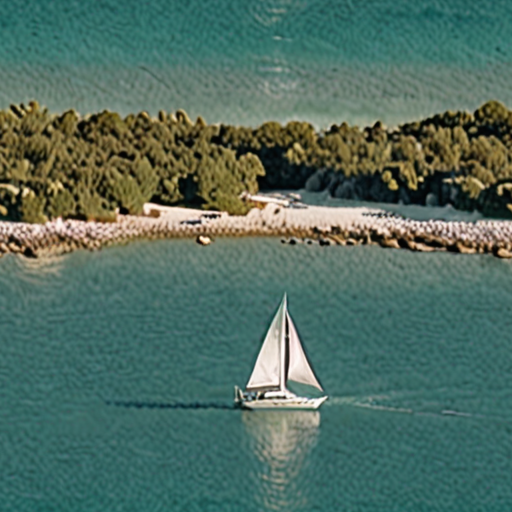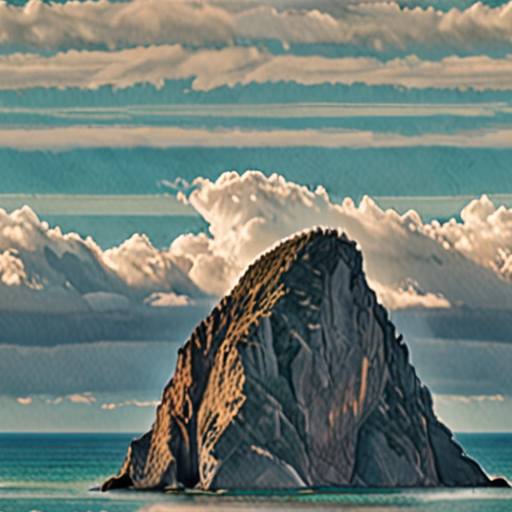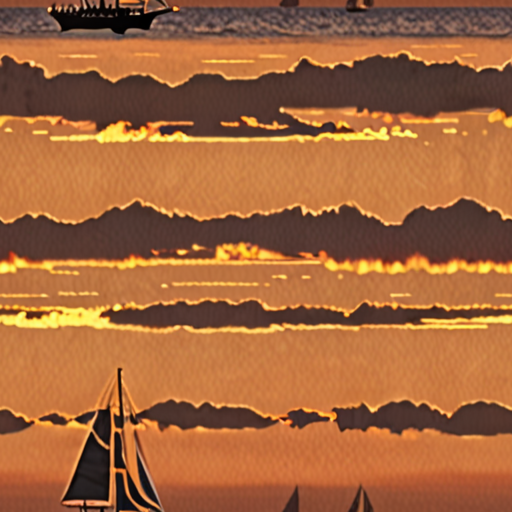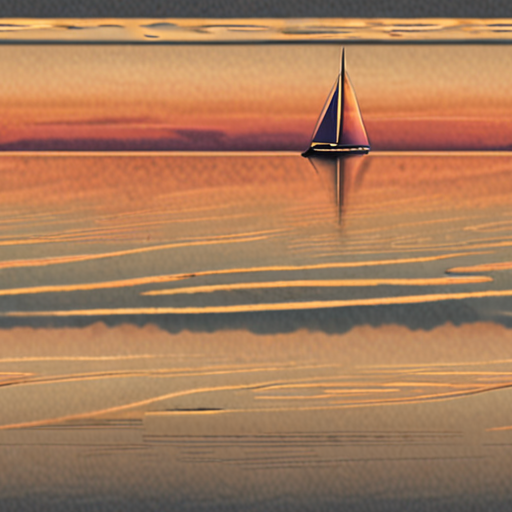As the sun rises over the horizon, casting a warm glow across the vast expanse of the ocean, sailors and photographers alike are drawn to the allure of capturing breathtaking moments on the water. Sailing and sea photography has become an increasingly popular pursuit, with enthusiasts seeking to freeze the beauty of the sea in time. Whether it’s the majestic sight of a sailboat gliding effortlessly across the waves or the vibrant colors of a sunset reflected off the water’s surface, there’s something undeniably captivating about the intersection of sailing and photography.

Capture Breathtaking Ocean Views Through Effective Sailing and Sea Photography Techniques
As a seasoned sailor and photographer, I’ve learned that capturing stunning ocean views requires a combination of skill, patience, and knowledge of the right techniques.
-
Harnessing Light
Light is one of the most critical elements in photography, and the ocean offers a unique opportunity to work with soft, golden light during sunrise and sunset.
To maximize the impact of light, try shooting during these times, and experiment with different angles and compositions to take advantage of the warm tones.
Additionally, consider using a polarizing filter to reduce glare and enhance the colors of the water and sky.
-
Composition and Movement
A well-composed shot can elevate even the most mundane scene into something breathtaking.
When photographing the ocean, look for interesting patterns, shapes, and textures in the waves, sand, and surrounding landscape.
Experiment with different perspectives, such as shooting from a low angle or using a long lens to compress the scene.
Don’t be afraid to move around and capture the dynamic movement of the ocean, whether it’s a gentle swell or a powerful wave.
-
Camera Settings and Equipment
While camera settings and equipment can greatly impact the quality of your photos, don’t feel overwhelmed by the technical aspects.
Start by understanding your camera’s manual mode and experimenting with different settings to find what works best for you.
Consider investing in a waterproof housing or a ruggedized camera body to protect your gear from the elements.
Finally, don’t underestimate the importance of a good tripod and remote shutter release – they’ll help you stabilize your camera and avoid camera shake.
-
Post-processing and Editing
Even with great technique and equipment, post-processing and editing play a crucial role in bringing out the best in your photos.
Learn the basics of image editing software like Adobe Lightroom and Photoshop, and practice applying adjustments to enhance contrast, color balance, and exposure.
Pay attention to noise reduction, sharpening, and local adjustments to fine-tune your images.
Remember, post-processing is an art, and there’s no one-size-fits-all approach – trust your instincts and develop your own style.
By mastering these techniques and staying true to your artistic vision, you’ll be able to capture breathtaking ocean views that showcase the beauty and power of the sea.
Whether you’re a seasoned pro or just starting out, remember to stay curious, keep practicing, and always push yourself to new heights.
Happy sailing and snapping!
Essential Tips for Taking Stunning Photographs While Navigating the Open Waters
As a seasoned sailor and photographer, I’ve learned that capturing breathtaking shots of marine life, sunsets, and coastal landscapes requires a combination of skill, patience, and knowledge of the open waters.
-
Mastering Composition and Lighting
When it comes to sailing and sea photography, composition and lighting are crucial elements to consider. Look for interesting angles, play with reflections, and experiment with different lighting conditions to capture unique and captivating images.
-
Understanding Camera Settings and Equipment
Familiarize yourself with your camera settings and equipment to ensure you’re getting the best possible shots. Learn how to adjust aperture, shutter speed, and ISO to suit different lighting conditions and subject matter.
-
Timing and Patience
Sailing and sea photography often require waiting for the perfect moment to capture a shot. Develop your patience and timing skills to anticipate and capture the most spectacular moments, such as sunrise or sunset.
-
Respecting the Environment and Wildlife
Remember to respect the environment and wildlife when photographing in the open waters. Keep a safe distance from marine life, avoid disturbing habitats, and always follow local regulations and guidelines.
-
Staying Safe and Prepared
Always prioritize your safety and well-being when sailing and photographing in the open waters. Make sure you have the necessary gear, check the weather forecast, and stay alert for changing conditions.
By mastering these essential tips and techniques, you’ll be well on your way to capturing stunning photographs while navigating the open waters. Remember to stay focused, patient, and respectful of the environment and wildlife, and always keep your safety and well-being in mind.
Additional Resources:
- Sailing World offers valuable insights and tips on sailing and photography.
- National Geographic provides inspiring and educational content on photography and the natural world.
- Digital Photography Review offers in-depth reviews and tutorials on camera equipment and techniques.

Capturing the Perfect Shot of a Sailboat Against a Dramatic Ocean Backdrop
When it comes to capturing the perfect shot of a sailboat against a dramatic ocean backdrop, there are several key elements to consider.
-
Composition
Consider the rule of thirds when composing your shot. Place the sailboat off-center, either to the left or right side of the frame, to create a more dynamic and visually appealing image.
Pay attention to the negative space around the sailboat, allowing the viewer’s eye to move freely between the subject and the surrounding environment.
Experiment with different angles and perspectives, such as shooting from low or high vantage points, to add depth and interest to your image.
-
Lighting
Lighting can make or break a photograph, especially when it comes to capturing the drama of the ocean.
Look for soft, diffused light during the golden hour, just before sunset, to create warm and inviting tones.
Avoid harsh midday sun, which can create unflattering shadows and highlights.
Consider using a polarizing filter to reduce glare and enhance the colors of the ocean and sky.
-
Timing
The timing of your shot can greatly impact its success.
Wait for the sailboat to reach the optimal position in relation to the waves and wind direction.
Be prepared to capture the moment when the sailboat is fully rigged and ready to set sail.
Keep an eye out for interesting wave patterns and movements, which can add dynamism to your image.
-
Camera Settings
Choose the right camera settings to capture the perfect shot.
Select a fast shutter speed to freeze the motion of the sailboat and waves.
Use a medium to large aperture to blur the background and emphasize the sailboat.
Shoot in RAW format to capture maximum detail and flexibility during post-processing.
-
Post-Processing
Post-processing is an essential step in refining your image and bringing out its full potential.
Adjust the exposure and contrast to balance the brightness and darkness of the image.
Apply subtle color grading to enhance the mood and atmosphere of the scene.
Sharpen the image to reveal fine details and textures.
By considering these key elements and practicing patience and persistence, you’ll be well on your way to capturing stunning photographs of sailboats against dramatic ocean backdrops.
Remember to stay flexible and adapt to changing conditions, always keeping an eye out for unique opportunities and unexpected moments.
With dedication and skill, you’ll be able to create breathtaking images that showcase the beauty and power of the ocean.

What Makes a Great Sailing Photographer?
I’ve spent years honing my skills as a sailing photographer, and I’m excited to share my expertise with you.
- Technical Skills: A great sailing photographer needs to have a solid understanding of camera settings, lighting, and composition.
- Knowledge of the Sea: Familiarity with sailing terminology, weather patterns, and marine life can greatly enhance your photos.
- Storytelling Ability: The best sailing photographers can convey the essence of the sea and its inhabitants through their images.
Essential Skills for Capturing Stunning Images of the Sea
- Composition: Learn how to frame your shot, considering factors like leading lines, symmetry, and negative space.
- Lighting: Understand how to work with natural light, including golden hour, overcast skies, and backlight.
- Camera Settings: Master your camera’s manual modes, experimenting with aperture, shutter speed, and ISO.
- Post-processing: Develop your editing skills, learning how to enhance colors, contrast, and texture.
Staying Up-to-Date with the Latest Trends and Techniques
As a sailing photographer, it’s essential to stay informed about the latest developments in the field.
- Attend Workshops and Seminars: Network with fellow photographers and learn from industry experts.
- Join Online Communities: Participate in forums and social media groups to share knowledge and get feedback.
- Experiment with New Equipment: Stay ahead of the curve by trying out the latest cameras, lenses, and accessories.
The Importance of Community and Collaboration
Sailing photography is not just about taking pictures – it’s about sharing experiences and building relationships.
- Connect with Fellow Photographers: Collaborate on projects, share tips, and learn from others.
- Engage with Sailing Enthusiasts: Share your passion for sailing and photography with like-minded individuals.
- Participate in Contests and Competitions: Showcase your work and receive constructive feedback.
Becoming a Part of the Sailing Photo Awards Community
We’re proud to be part of a vibrant community of sailing enthusiasts and photographers.
- Explore Our Gallery: Browse our collection of stunning sailing photographs.
- Read Our Blog: Discover tips, tricks, and inspiring stories from experienced sailors and photographers.
- Get Involved: Share your own photos, participate in discussions, and join our community today!
Mastering Camera Settings and Techniques for Captivating Sailing and Sea Photography
Capture the essence of the ocean with expert tips on camera settings and techniques for stunning sailing and sea photography, from vibrant colors to dynamic movement.
-
Understanding Your Camera
Familiarize yourself with your camera’s manual mode and experiment with different settings to achieve the desired effect.
- ISO: Set your ISO between 100-400 for optimal image quality and minimal noise.
- Shutter Speed: Use a fast shutter speed (1/500th of a second or faster) to freeze motion and capture sharp images.
- Aperture: Experiment with different aperture values (f/2.8-f/16) to control the depth of field and create a sense of intimacy or grandeur.
-
Composition and Framing
Pay attention to composition and framing to create visually appealing images that draw the viewer’s eye.
- Rule of Thirds: Divide your frame into thirds both horizontally and vertically, placing important elements along these lines.
- Symmetry: Use symmetry to create a sense of balance and harmony in your images.
- Leading Lines: Look for leading lines that guide the viewer’s eye through the image.
-
Lighting and Color
Understand how lighting and color can enhance or detract from your images.
- Natural Light: Shoot during the golden hour (dawn or dusk) for warm, soft light that enhances colors and textures.
- Artificial Light: Use flash or continuous lights to add depth and interest to your images.
- Color Palette: Experiment with different color palettes to evoke emotions and convey mood.
-
Camera Movement and Panning
Experiment with camera movement and panning to add dynamism and energy to your images.
- Panning: Follow moving subjects with your camera to create a sense of motion and blur the background.
- Camera Movement: Use slow and deliberate movements to create a sense of drama and tension.
Additional Tips and Resources
For more information on camera settings and techniques, check out our tips and resources page .
Remember to always follow best practices for SEO and user experience when creating content.

Mastering Sailing and Sea Photography: Overcoming Unique Challenges
Capture breathtaking sailing and sea photography by mastering the art of shooting from a moving vessel.
-
Understanding the Challenges
The sea offers endless opportunities for capturing stunning images, but photographing from a moving vessel presents unique challenges.
-
Camera Movement and Blur
One of the primary concerns when shooting from a boat is camera movement and blur caused by waves and wind.
-
Lighting Conditions
Sea photography often involves working with harsh sunlight, which can lead to overexposure and loss of detail.
-
Composition and Framing
With the constant motion of the boat, it can be difficult to frame shots and compose scenes effectively.
-
-
Adapting Techniques for Exceptional Images
To overcome these challenges, photographers need to adapt their techniques and develop strategies for capturing exceptional sailing and sea images.
-
Panning and Tracking
Panning and tracking techniques allow photographers to freeze fast-moving subjects and capture sharp images despite camera movement.
-
Using Shutter Speed and Aperture
Adjusting shutter speed and aperture settings can help control exposure and minimize blur caused by camera movement.
-
Focusing on Key Elements
Photographers should focus on key elements of the scene, such as the sailboat or the sea itself, to create visually appealing compositions.
-
-
Best Practices for Sailing and Sea Photography
By understanding the challenges and adapting techniques, photographers can capture exceptional sailing and sea images that showcase the beauty of the sea.
-
Practice and Patience
Shooting from a moving vessel requires practice and patience, as photographers need to adjust to changing lighting conditions and composition challenges.
-
Experimentation and Creativity
Photographers should experiment with different techniques and styles to find what works best for them and to push the boundaries of sailing and sea photography.
-
Post-processing and Editing
Effective post-processing and editing techniques can enhance the visual impact of sailing and sea images, making them stand out in competitions and exhibitions.
-
Conclusion
Mastery of sailing and sea photography requires a deep understanding of the challenges involved and the ability to adapt techniques to capture exceptional images.
By practicing patience, experimenting with creativity, and applying effective post-processing and editing techniques, photographers can create stunning sailing and sea images that showcase the beauty of the sea.
0 Comments